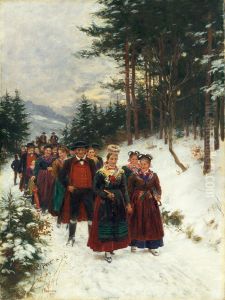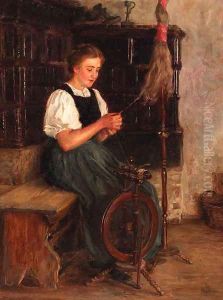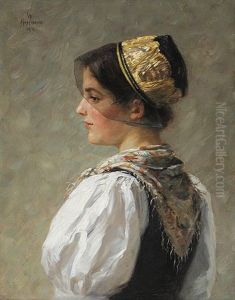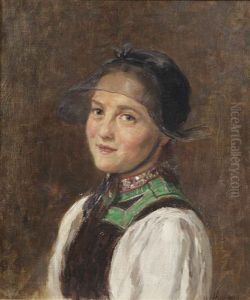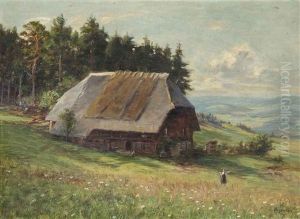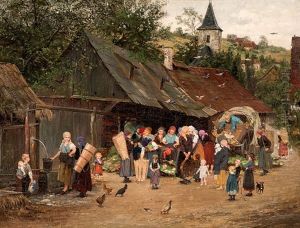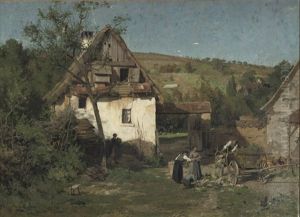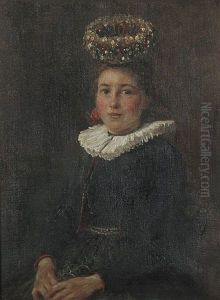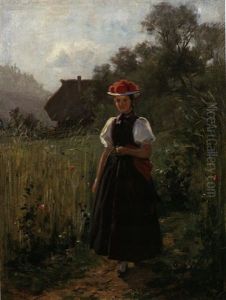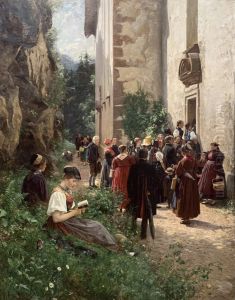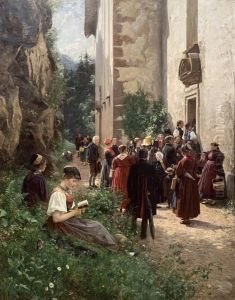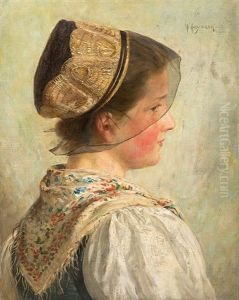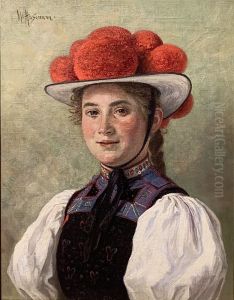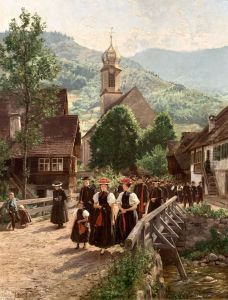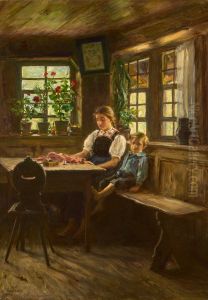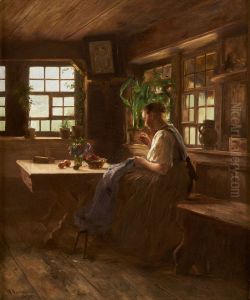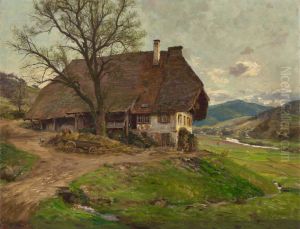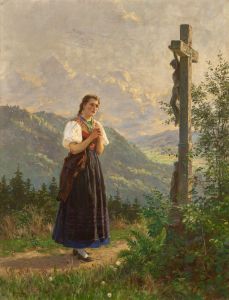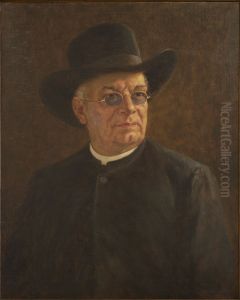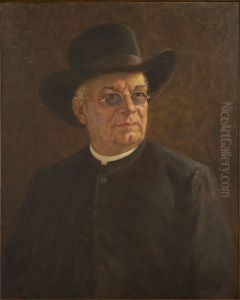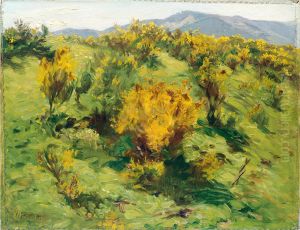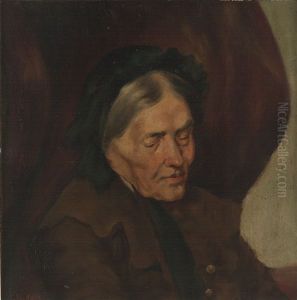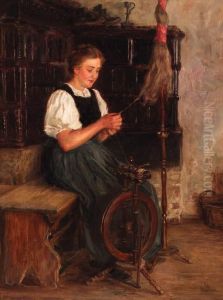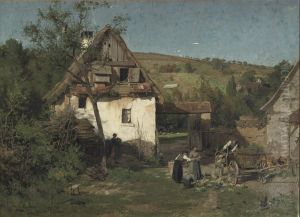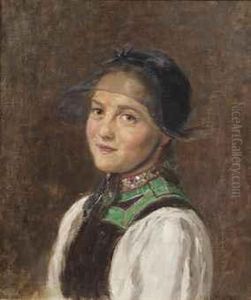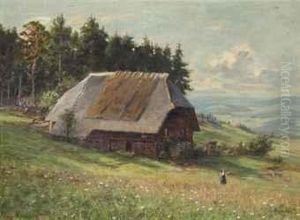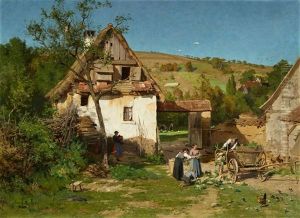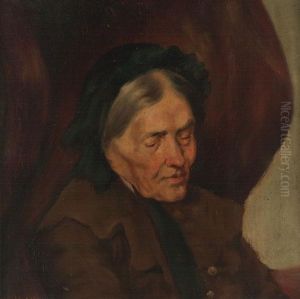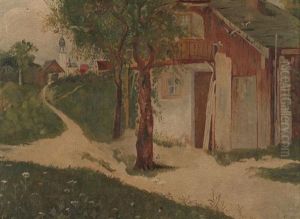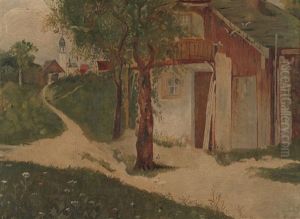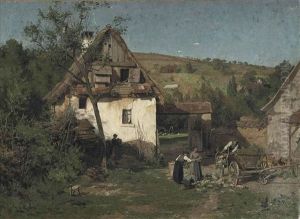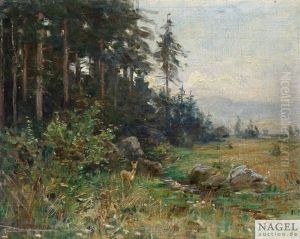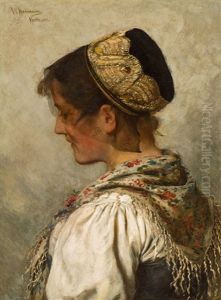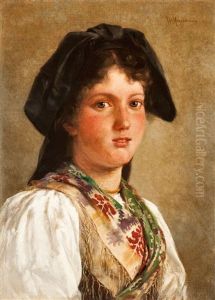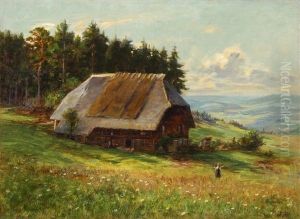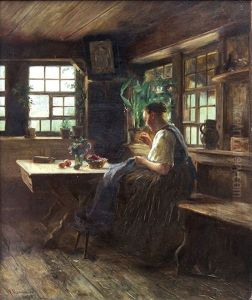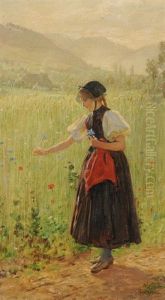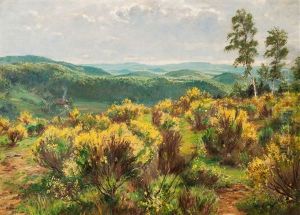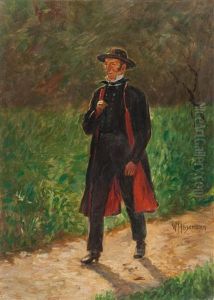Wilhelm Hasemann Paintings
Wilhelm Hasemann was a distinguished German painter and illustrator, born on May 13, 1850, in Güstrow, Grand Duchy of Mecklenburg-Schwerin (now Germany). He is best remembered for his contributions to the Düsseldorf school of painting, a movement that emphasized detail, color, and light, and for his depiction of rural and peasant life in Germany. Hasemann's work is characterized by its focus on the simple, everyday activities of rural communities, often infused with a sense of realism and a deep empathy for his subjects.
After initial training in art in his native town, Hasemann furthered his studies at the Academy of Fine Arts, Düsseldorf, where he was influenced by the teachings of Eugen Dücker, a landscape painter who emphasized the importance of naturalistic landscapes and plein air painting. This influence is evident in Hasemann's work, which often features the landscapes and people of the Black Forest region, where he eventually settled in the town of Gutach. Together with his friend and fellow artist, Curt Liebich, Hasemann became a central figure in the Gutach artist colony, which attracted many artists and became known for its distinct style of painting.
Throughout his career, Hasemann exhibited his work widely, gaining recognition and accolades for his detailed and sensitive portrayals of peasant life. His paintings often depict scenes of daily life—people working in the fields, gathering in community spaces, or engaging in traditional customs and festivities. These works are noted for their detailed representation, vibrant color palette, and the ability to convey the rhythms of rural life.
Wilhelm Hasemann's contributions to German art were significant, not just for his artistic output, but also for his role in promoting the Gutach artist colony and influencing subsequent generations of artists interested in rural and folk themes. Despite the changes in artistic trends over time, Hasemann's work remains appreciated for its historical and cultural value, offering insights into the rural German life of his era.
Hasemann's legacy is preserved in various German museums and collections, where his paintings continue to be appreciated for their beauty, craftsmanship, and historical significance. He passed away on November 4, 1913, in Gutach, leaving behind a body of work that continues to be celebrated for its contribution to the German art scene of the late 19th and early 20th centuries.
